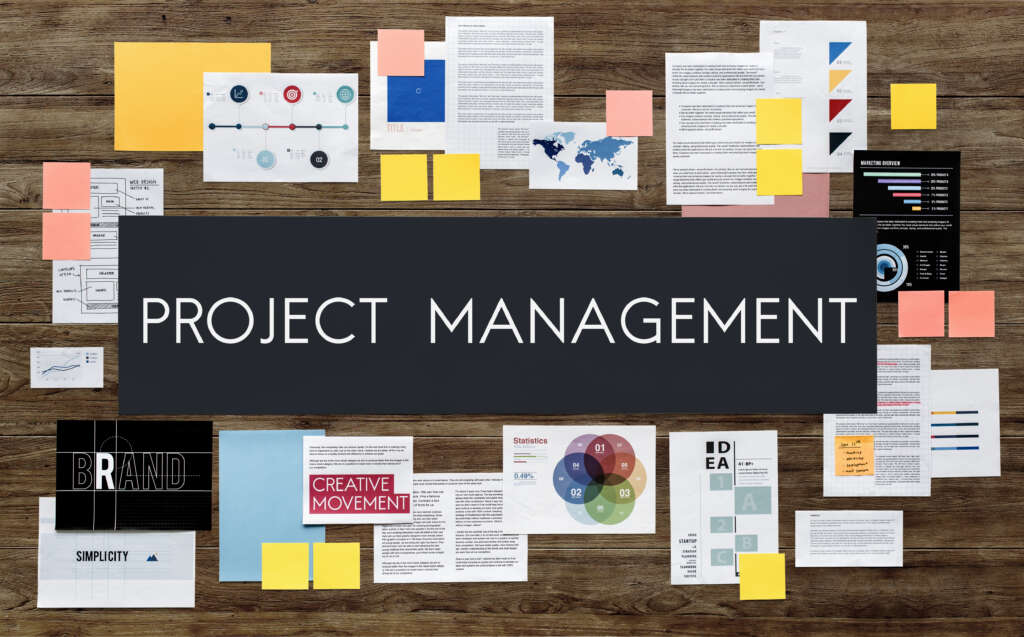The ability to manage projects efficiently has never been more crucial. Project management tools have emerged as indispensable assets for teams striving to navigate this complexity, ensuring that projects are delivered on time, within budget, and up to standards. These tools not only facilitate seamless collaboration and communication among team members but also provide critical insights into project progress and resource allocation. Understanding and leveraging the right project management tools can significantly impact a team’s success and operational efficiency.
This article delves into the importance of project management tools for teams, outlining the essential features to look for and reviewing the most popular options available in 2024. It further guides you in selecting the best project management tools tailored to your team’s needs and offers a step-by-step approach to implementing these tools effectively.
Additionally, it highlights best practices for maximizing the benefits of project management tools, ensuring that teams can achieve their project goals with enhanced productivity and collaboration. Join us as we explore how to streamline project management processes and drive team performance to new heights.
The Importance of Project Management Tools for Teams
Project management tools are indispensable in today’s business environment, acting as the backbone for effective team collaboration and project success. These tools provide a centralized platform where all project-related data is accessible, ensuring that team members are aligned with the project’s objectives and can communicate efficiently.
Enhancing Productivity
Project management tools significantly boost productivity by automating repetitive tasks and improving access to information. This allows team members to focus on strategic tasks that add value to the project. With features like task delegation, scheduling, and progress tracking, these tools ensure that projects are completed on time and within scope. Integrated analytics and reporting tools further aid in strategic planning and informed decision-making by providing crucial data on project performance.
Improving Collaboration
Effective collaboration is key to the success of any project. Project management tools facilitate this by offering instant updates and communication tools that help reduce misunderstandings and clarify roles and responsibilities. For instance, platforms like Jira, when integrated with tools like RMsis, provide a comprehensive solution that enhances team unity and clarity in project goals. The ability to work collaboratively on documents and share files in real time ensures that everyone is on the same page, thereby enhancing team dynamics and project outcomes.
Streamlining Processes
Project management tools streamline various project processes by providing a structured approach to managing work. From the initial planning stages to the final delivery, these tools help manage resources effectively, ensuring that the right people and supplies are available when needed. This optimization of resource allocation not only saves time but also reduces costs. Furthermore, the ability to quickly adjust to changes in project scope or priorities helps maintain project momentum, adapting swiftly to any new challenges that may arise.
In conclusion, leveraging the right project management tools is crucial for any team aiming to achieve high efficiency and productivity in their projects. These tools not only simplify the management of complex projects but also foster a culture of collaboration and innovation, propelling teams towards successful project execution.
Essential Features of Project Management Tools
Project management tools are critical for ensuring teams can operate efficiently and effectively. The essential features of these tools can significantly enhance productivity, collaboration, and project outcomes. Here are some of the key functionalities to look for:
Task Assignments
Effective task management is foundational in project management tools. It should allow managers to assign tasks to team members, set priorities, and track progress. Features like adding due dates and sending automatic notifications when tasks approach their deadlines help keep projects on track. This functionality is crucial as it directly impacts team productivity and the overall success of the project.
Timeline and Scheduling Features
A robust project management tool will offer comprehensive timeline and scheduling features. These may include Gantt charts, which provide a visual overview of the project timeline, showing tasks, durations, and dependencies. This helps teams understand task sequences and deadlines, ensuring that each phase of the project progresses smoothly. Additionally, effective scheduling tools assist in resource allocation, ensuring that all tasks are covered without overloading team members.
Resource Management
Resource management is another critical feature of effective project management tools. These tools should provide a clear view of all resources, including team members and their assignments, to prevent overallocation. They also need to track the availability and utilization of resources, helping managers make informed decisions about resource allocation and ensuring that no resource is stretched too thin.
Communication Tools
Communication tools within project management tools are vital for ensuring that all team members can collaborate effectively, regardless of their location. These tools should support real-time communication, file sharing, and updates. Features like collaborative discussion tools, virtual coffee chats, and daily stand-ups facilitate regular communication and alignment among team members, enhancing transparency and teamwork.
Incorporating these essential features into a project management tool can dramatically improve the management of tasks, resources, and team communication, leading to more successful project outcomes.
Popular Project Management Tools Reviewed
Wrike stands out as a top-tier work management platform, recognized for its comprehensive suite of tools that cater to a diverse range of professionals from project managers to marketing heads. With over 20,000 companies and 2.4 million people across 140 countries relying on its capabilities, Wrike is a preferred choice in various industries. Its extensive features include built-in resource planning, time-tracking, and budgeting, all designed to enhance team efficiency. Notably, Wrike integrates automation and AI to streamline operations, predict project risks, and facilitate extensive reporting and prioritization.
1. Wrike
Wrike is a powerful project management and collaboration software designed to streamline workflows and enhance team productivity. It offers a centralized platform where teams can plan, track, and manage projects efficiently, facilitating real-time communication and seamless coordination.
With features like task management, Gantt charts, file sharing, and time tracking, Wrike caters to diverse project needs across various industries, from small teams to large enterprises. Its customizable dashboards and reporting tools provide insights into project progress and performance, making it a valuable tool for optimizing project management processes and achieving organizational goals.
Features and Benefits
Wrike offers more than 400 app integrations, allowing seamless transitions between Wrike and other essential apps like Google Drive and Slack. This integration capability extends to Adobe CC and DAM, enabling users to create, edit, and publish directly within Wrike, significantly boosting productivity and workflow continuity.
2. Asana
Asana is a versatile project management tool that helps teams organize their work and collaborate effectively. It offers a user-friendly interface where tasks can be created, assigned, and tracked with ease, promoting transparency and accountability within teams. Asana supports various project management methodologies, from Agile to traditional waterfall, allowing teams to customize workflows that suit their needs.
Features like task dependencies, timelines, and integrations with other productivity tools enhance efficiency and streamline project execution. Asana’s focus on simplicity and flexibility makes it a popular choice for teams of all sizes looking to manage projects efficiently and achieve their goals effectively.
Unique Selling Points
Asana, another popular project management software, is built to support businesses of various sizes with an attractive interface that combines file storage, project roadmaps, and dashboards. Asana’s all-in-one platform provides extensive work organization features and resource management tools, making it a robust solution for effective project management. It supports over 200 app integrations, enhancing its utility by allowing users to maintain their preferred workflows with apps like Google Calendar and Slack.
Monday.com
Monday.com is a versatile work operating system that streamlines project management and team collaboration. It provides a highly customizable interface, allowing users to tailor workflows to fit their unique needs. With features like task tracking, timelines, and automated notifications, it enhances productivity and ensures efficient communication.
Monday.com supports integrations with various tools, making it a cohesive hub for all project-related activities. Its user-friendly design and robust capabilities make it a valuable asset for businesses aiming to improve operational efficiency and team coordination.
Pros and Cons
Monday.com is renowned for its user-friendly interface and comprehensive project management features, including automation, customizable dashboards, and an extensive template library. While it offers significant advantages such as optimizing operations and enhancing team productivity, a notable drawback is that key data can sometimes be overlooked due to the extensive information presented.
Despite having fewer integrations compared to competitors, Monday.com still maintains essential connections with popular apps like Google and Salesforce, ensuring it meets the basic needs of most project teams.
Each of these tools provides unique benefits tailored to specific team needs and project demands, highlighting the importance of choosing a tool that aligns well with the organization’s operational style and objectives.
Selecting the Best Project Management Tool for Your Team
Selecting the ideal project management tool for your team involves a systematic approach to understanding your team’s unique needs and the complexities of your projects. Here’s how to navigate the selection process effectively:
Team Size and Structure
The size and structure of your team play a crucial role in determining the right project management tool. Smaller teams might require more flexible, straightforward tools, while larger teams may benefit from robust features that can handle complex project structures and multiple simultaneous projects. Assessing your team size will help you understand the level of complexity and the features needed in the project management tool.
Project Complexity
The nature and complexity of your projects should guide the selection of your project management tool. For projects that are highly complex and involve many stages, tools with advanced features like Gantt charts, resource allocation, and detailed reporting are beneficial. Simpler projects might only require basic task management and collaboration features. Understanding the complexity will help you choose a tool that best supports your project management needs.
Budget and Costs
Budget is a critical factor when selecting a project management tool. It’s important to consider both the initial costs and the long-term financial impact. Some tools offer free plans suitable for smaller teams or startups, while others might require a subscription that provides more comprehensive features. Assess the total cost of ownership, including any costs for additional integrations, training, and support. Ensure the tool provides value for money and consider how the costs might scale with your team’s growth.
Integration with Existing Systems
The ability to integrate with existing systems is vital for ensuring a smooth workflow and minimizing disruption. A project management tool should seamlessly connect with your current tools and software, such as email platforms, CRM systems, and code repositories. Check for compatibility with your existing systems and the availability of APIs for custom integrations. This will help ensure that the tool fits well within your existing technological ecosystem and enhances rather than complicates your processes.
Steps to Implement Project Management Tools
Initial Setup
The first step in implementing project management tools effectively is to understand your project’s specific requirements. This includes identifying the goals, objectives, and deliverables, as well as understanding the roles, responsibilities, and expectations of team members and stakeholders. One should also consider the risks, constraints, and assumptions associated with the project.
This foundational knowledge will help in selecting a project management tool that aligns with your project’s needs and facilitates the customization of features and functions accordingly.
Customizing for Your Needs
Once a project management tool is selected, customization is critical to tailor it to the specific needs of your project. Start by setting up key project milestones, tasks, and dependencies within the tool. Customize fields, labels, and workflows to reflect the unique aspects of your project, such as priority levels and departmental categorization.
Integration with third-party apps or plugins can extend the functionality of the tool, connecting it with other systems like CRM platforms or budget-tracking tools. Regular adjustments and updates to the tool’s settings should be made as the project evolves to ensure continued alignment with project goals.
Team Onboarding and Training
Effective implementation of a project management tool also involves thorough team onboarding and training. Begin by explaining the importance of the new tool and how it will enhance project efficiency and team collaboration. Organize detailed training sessions that cover both basic and advanced features of the tool. These sessions should be interactive, allowing team members to practice using the tool and to ask questions.
Establish continuous support channels where team members can receive help and submit feedback on the tool’s usage. Regular follow-ups and refresher training can help ensure that the team remains proficient and that the tool is used to its full potential.
Implementing these steps will ensure that the project management tool is not only set up for immediate success but also continues to meet the needs of the project and team in the long term.
Best Practices for Using Project Management Tools
To maximize the effectiveness of project management tools, it is essential to adopt best practices that ensure these tools are utilized efficiently across the organization. Here are some key strategies to consider:
Regular Updates and Maintenance
Keeping project management software updated is crucial for maintaining its efficiency and security. Regular updates ensure that the software is equipped with the latest features and bug fixes, enhancing overall performance. Additionally, routine maintenance checks can help identify and resolve any potential issues before they impact productivity. Organizations should establish a schedule for updates and inform team members in advance to prepare for any changes or downtime associated with the updates.
Encouraging Team Adoption
Successful implementation of project management tools hinges on widespread adoption by the team. To encourage adoption, it is important to involve team members early in the selection process of the tool. This involvement helps ensure the tool meets the actual needs of the team and increases their commitment to using it. Training sessions should be organized to familiarize everyone with the tool’s features and benefits. Identifying and empowering enthusiastic team members as champions of the tool can also drive adoption, as they can provide support and encourage others to integrate the tool into their daily workflows.
Measuring Success and ROI
To evaluate the impact of project management tools, organizations should measure success and return on investment (ROI). This involves setting clear metrics and goals that align with the organization’s strategic objectives. Regular tracking of these metrics allows teams to assess whether the tools are delivering the expected benefits, such as increased productivity or improved project outcomes. Additionally, analyzing the ROI of these tools helps justify their cost and provides insights into how they can be further optimized to support business objectives.
Implementing these best practices will not only enhance the functionality and acceptance of project management tools within an organization but also contribute to more streamlined, effective project management processes.
Importance of a Strategic Approach
Throughout our exploration of project management tools for teams in 2024, we have seen how critical the right software is to streamline workflows, boost productivity, and enhance team collaboration. By recapping the essentials of selecting a tool—considering team size and structure, project complexity, budget constraints, and integration capabilities—we underscore the importance of a strategic approach to this choice.
Further emphasis on implementing these tools effectively, through customization, team onboarding, and adaptation to evolving project needs, illustrates a pathway to realizing their full potential. The journey from understanding the inherent value of project management tools to actual deployment and optimization within teams is pivotal for enhanced project outcomes and operational efficiency.
In light of this, the significance of adopting and maximizing project management tools cannot be overstated. As teams strive for agility and efficiency in a fast-paced business environment, the utility of these tools in fostering a collaborative work culture and achieving operational excellence is evident. Drawing on the detailed reviews of top tools like Wrike, Asana, and Monday.com, as well as best practices for implementation and use, this article provides a comprehensive guide for businesses looking to empower their project management processes.
FAQs
What are the leading project management tools currently available?
The top project management software solutions include monday.com, known for its workflow automation capabilities; Celoxis, which excels in project management with BI analytics and dashboards; ClickUp, notable for its task customization features; Jira, ideal for cross-team project tracking; and Wrike, recognized for its project approval workflows.
Does Microsoft Teams offer project management functionalities?
Yes, Microsoft Teams integrates project management tools that allow teams to manage projects, store deliverables, and collaborate effectively all in one place. Key features include project templates, task and work management, and an interactive Gantt chart.
What is the projected job growth for project management professionals?
The employment of project management specialists is expected to increase by 6 percent from 2022 to 2032, which is faster than the average growth rate for all occupations. Annually, around 68,100 job openings for project management specialists are anticipated throughout this period.
What are the three most commonly used project management methodologies?
The most frequently used project management methodologies are the waterfall, Agile, and lean methodologies. Other significant methodologies include PRINCE2, the critical path method, and Six Sigma, each offering unique frameworks and advantages for managing projects.







Popular Comments